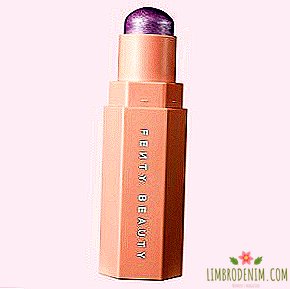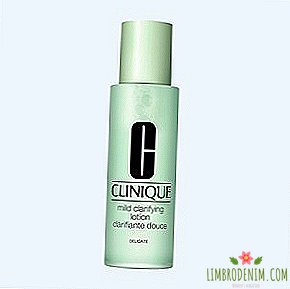The celebrity factor: How celebrities make us buy (or not)
A couple of months ago, Ukrainian designer Ruslan Baginsky posted on his Facebook photo of Bella Hadid in one of his hats. With the creation of Baginsky, the model met on a magazine shoot, after which she decided to keep her hat for herself - she published a photo of her on Instagram, and a few days later the frames went almost all the fashionable online resources with Bella Hadid’s headlines. Since then, Ruslan Baginskiy’s hats have managed to shine in Japanese and Mexican Vogue, Russian Elle and the Daily Mail, and now among the brand's clients are Chiara Ferrany, Sophia Richie and Courtney Kardashian.

Givenchy agreed to make an outfit for "Sabrina" only because he thought that the cinema star Katherine Hepburn would come to him, and not her then little-known namesake Audrey
The close friendship of the fashion and stars industry began in the 1920s and 1930s, when Hollywood was recognized as the main supplier of luxury to the masses. The screen stars flaunted the costumes created especially for them by costume designers and designers, not only on the set of films, but also beyond them. “The audience wanted us to live like kings and queens, which we did,” recalled Gloria Swanson, whose glory fell on the film “Sunset Boulevard”. For a celebrity of this size, it was customary to take along three dozen suitcases full of clothes, going on a trip for a couple of days.
The efforts were justified, and not only in the context of the image of a single star, but also of the designer who dressed her: there is a case when after Joan Crawford appeared in the drama “Letty Linton” in the dress of Gilbert Adrian, a famous Hollywood costume designer, exactly the same dress was sold at Macy's in the amount of 50 thousand copies. And the dress of Grace Kelly, in which she married the Prince of Monaco in 1956, by Helen Rose was one of the most copied in history.
However, the high Parisian fashion, which, prior to the 1950s, routinely set trends, did not immediately appreciate the marketing potential of stars. In 1931, Gabrielle Chanel, at the invitation of the head of Metro-Goldwyn-Mayer studio Samuel Goldwyn, agreed to work on several films, but this union quickly collapsed (perhaps the most famous film for which the designer designed the costumes, "Last year in Marienbad, 1961 ). Christian Dior wore Marlene Dietrich in Hitchcock’s “Stage Fear” and Olivia de Havilland and Myrna Loy in Norman Krasna’s “Ambassador’s Daughter”, but when he was asked to create a wedding dress for Brigitte Bardot in “The Bride Too Good,” answered something like : "Dior in no case can expose its customers to the displeasure of watching their dresses in some vulgar setting."
Hubert de Givenchy agreed to make an outfit for "Sabrina" only because he thought that the cinema star Katherine Hepburn would come to him, and not her then little-known namesake Audrey (what this story ended with, we all know well). The arrogance of Hollywood cinema was due to the fact that in the eyes of the Parisian fashion industry it was considered part of lowbrow culture - entertainment “for the masses”, and not for the “elite”.


The situation began to change in the 80s, when the boundaries between those low and high brows began to blur gradually - first in the media space and entertainment culture, and then in fashion. Competition to the respected fashion houses were now ready to make up young and ambitious designers from America and Italy, and they were not afraid to ruin their reputation as "dubious" cooperation.
In 1980, the American Gigolo came out, bringing good bonuses to at least two film crew members: Richard Guire, for whom the role in the film became a launching pad for a dizzying career, and Giorgio Armani, the designer who had gained momentum for Geer 90% of screen time. In 1982, Armani became the face of Time magazine’s cover (only one designer, Yves Saint Laurent), was honored with this honor; in 1988, he hired former Herald Examiner columnist Wanda McDaniel as director of celebrity cooperation. Thanks to her efforts, he wore eleven nominees (including Jodie Foster, Salma Hayek and Martin Scorsese) in the dresses and costumes of his authorship for the Oscar ceremony in 1991, for which the event was called “Armani Awards”. The result - from 1990 to 1993, the company's profit Giorgio Armani soared twice, amounting to 442 million dollars.
Then it became quite obvious: cooperation with celebrity is an effective and, importantly, low-cost way to make money. Enough to put some influential star in the first row in his show - and you get dozens, or even hundreds of publications in publications around the world, and hence the attention of potential customers (if your favorite actress or singer honored the brand with their attention, then he is a priori good - it doesn’t matter that, most likely, this very celebrity was paid for the visit).
At the same time, from the beginning of the 90s, the fashion industry gradually began to turn from elite to mass, new bosses of respected fashion houses made profitable castling in the creative departments of brands and looked for fresh ways to create buzz around fashionable assets obtained for business use. The stars of the MTV music channel, which was becoming an increasingly powerful mouthpiece for what was “cool” and what was not, turned into desirable customers. Dressing a pop Olympus star was a matter of honor for companies that forty years ago belonged to the "plebeian" culture with disdain.
But the game definitely cost a candle: sales grew in direct proportion to the accuracy of getting into the hot list. After Madonna appeared at the 1995 MTV Video Music Awards ceremony in velvet Gucci pants, just a few days in the brand’s stores, a waiting list lined up for them. When Princess Diana published the same year with the Lady Dior bag, named in her honor, the company sold 100,000 copies and for this only raised its 1996 revenue by 20%.
Overnight, public figures of all stripes — from singers to it girls — became style arbiters, and anyone who wanted to touch a halo of their glory a little could simply buy a handbag for $ 1,000. The final recognition of the strong marriage of the Institute of Fashion and Celebrity was the fact that fashion magazines more and more often took into the habit of putting on their covers not models, but stars - a tactic that American Vogue, the founder of the genre, still adheres to.

"I think, years later, our descendants will look into the past and say:" Lord, how the earth bore such gullible fools ""
By the middle of the zero, the train finally got on the rails and was no longer going to go with them. The popularization of tabloids only added more oil: henceforth the quotes of a particular star depended not only (and sometimes not so much) on its talent and creative abilities, but also on its appearance. To get enough points for potential advertising or work contracts, celebrities had to seek help from personal stylists.
At first, their task was simply to create a presentable image for their customers, but as soon as the brands realized that the paparazzi made a photo of a popular star with their bag under their arm, there was an enormous advertising power, they began to race pop stars for themselves - from lipsticks to python leather shoes. Remember the episode "Sex and the City", where Samantha on behalf of Lucy Liu ordered the rare Hermès Birkin, and, having received a gift by mistake, the actress said: "This is not my style at all, but I got the bag for free, so it will do"? Perfectly illustrates the state of affairs in the relationship between the fashion industry and celebrity.
Year in 2009, interest in the celestials of the entertainment industry began to fade, and bloggers gradually began to take their place. Increasingly, they began to say that the prospective audience of millennials trusts far more in the same simple children as they do, with an unbiased opinion and an authentic style that is not the result of the work of a whole staff of professionally trained people. As soon as the audience of popular Internet personalities began to reach millions of marks, brands realized that this was where the goldmine was: promoting goods through channels close to the people could be much more effective than the banal actress clothing sponsorship for the red carpet.
However, quite soon, those same independent bloggers themselves went into the category of "ordinary" celebrities and began to advertise everything that companies were willing to pay big money for. The exponentially growing popularity of instagram gave the celebrity phenomenon a new impetus: now the fans got access behind the scenes of the life of their idols, and anyone who can hold a smartphone could become a star.


Judging by the pricing instagram advertising celebrities of different caliber, brands, more than ever, see them as a powerful advertising tool, often much more effective than a magazine reversal or a video on TV. Kim Kardashian for one publication will ask an average of 500 thousand dollars. Cristiano Ronaldo - almost 400 thousand dollars. Just for one mention in the account, Selena Gomez will have to pay about 543 thousand dollars, cooperation with Kylie Jenner will cost 398 thousand dollars for the post, and her sister Kendall - 368 thousand. Moreover, if a brand wants this or that star to appear in the dress provided to them, now it will have to pay not only the star itself, but also its stylist - an average of 50 thousand dollars. For comparison: advertising position in the British Vogue costs from 18,600 to 191,000 dollars. The total audience coverage of the print and online versions of the magazine is slightly more than 195 thousand people. The number of subscribers in the instagram of Cara Delevingne, which takes about $ 150,000, is 40.7 million.
Before Kate Middleton began to appear regularly in public in Reiss dresses, this democratic British brand operated with small volumes of production. But after Kate and Prince William's engagement photos appeared on the Web, in which the future Duchess of Cambridge posed in Nannette's snow-white dress, Reiss had to specifically release a few more games of this model - so high was the demand. “Then Nannette’s dresses were not available, so we decided to re-release it,” representatives of the brand told Vogue UK in an interview. “We sold everything clean very quickly - on average, one dress went off per minute. After that, we released a few more games, and they also had a full soldier out. " In 2014, Rihanna came to the Grammy ceremony in a huge Giambattista Valli dress, similar to pink marshmallow - along with a wave of memes, the brand received an 18% rise in sales.
And yet, why does the celebrity factor work so well, and, according to some studies, 48% of women are more likely to trust the opinion of a famous actress or singer than a best friend? “The thing is, people want to feel like a part of what they never become,” said Eli Portnoy, branding strategy specialist, The New York Times. “They can buy a thing that a celebrity uses, and thus become a bit like closer to her status. I think, years later, our descendants will look into the past and say: “Lord, how the earth bore such gullible fools.” We look at the pictures of the fashionably dressed star, read the information only visually and think: “I want to look just as cool “- that should mean Vat "I want to be as rich and famous". " The emotional hook that brands catch on us, working with opinion leaders, works flawlessly.
"Our main goal is to show customers how good and high-quality the product we have created, and to call Gwyneth Paltrow to advertise him means to enhance this effect at times," commented Tod's general manager Claudio Castiglioni's collaboration with the actress. The possession of moccasins or a cap of a Ukrainian designer, like that of a beloved celebrity, as if brings us closer to the star status - logic, similar to that which the tribes adhered to, worn the skins of dead animals in order to appropriate their power. All this, of course, pure illusion, but apparently, primitive instincts still prevail over the rational.
Photo: Zadig & Voltaire, Warner Bros., Paramount Pictures, Topshop, Hype





